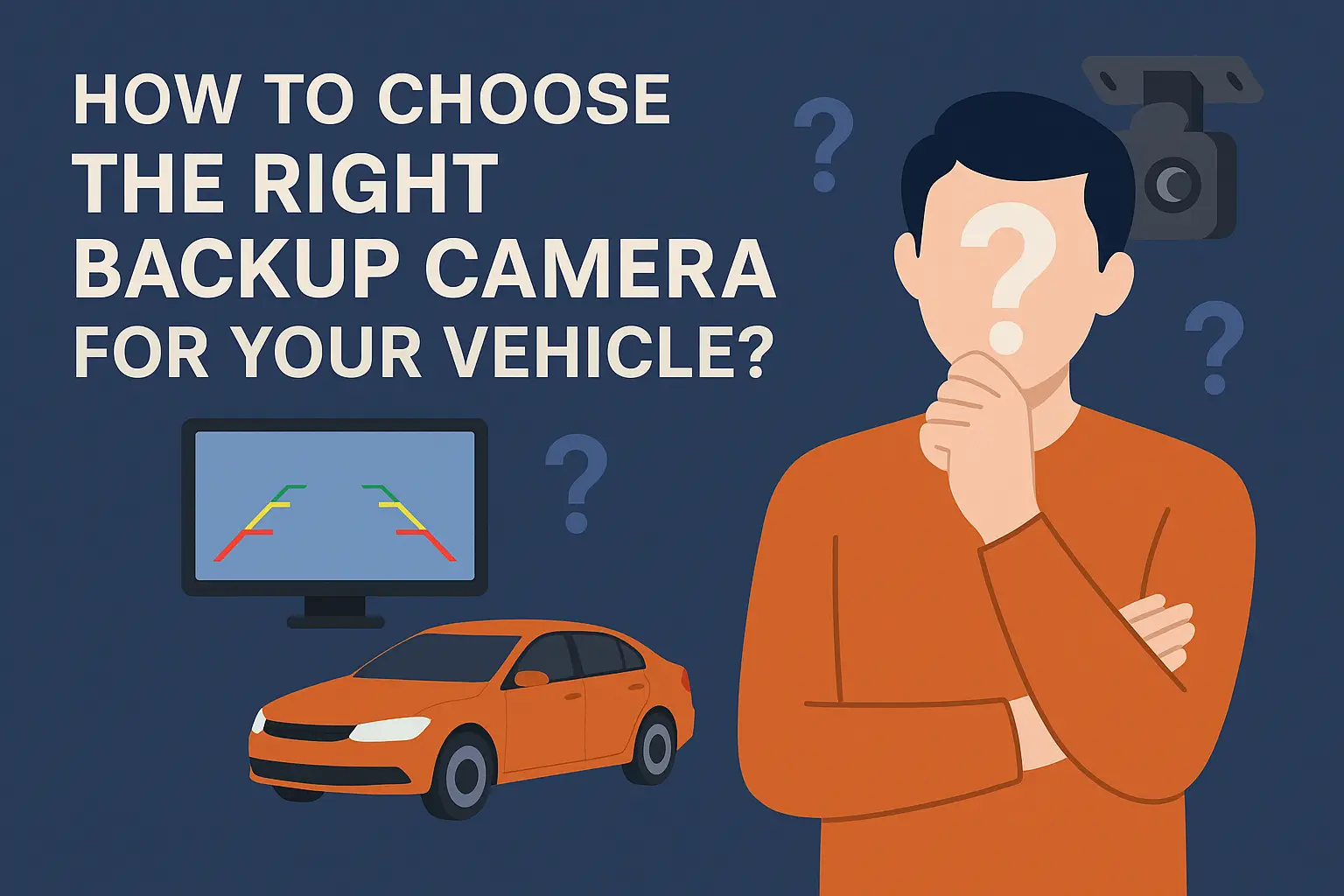Reversing is a blind spot nightmare. Worried about hitting something unseen? A backup camera is your solution for stress-free parking and enhanced road safety.
To choose the right backup camera, focus on three key areas: the viewing angle for coverage, the mounting type for your specific vehicle, and essential features like night vision and gridlines. Getting these right ensures you have a clear, reliable view behind you every time.
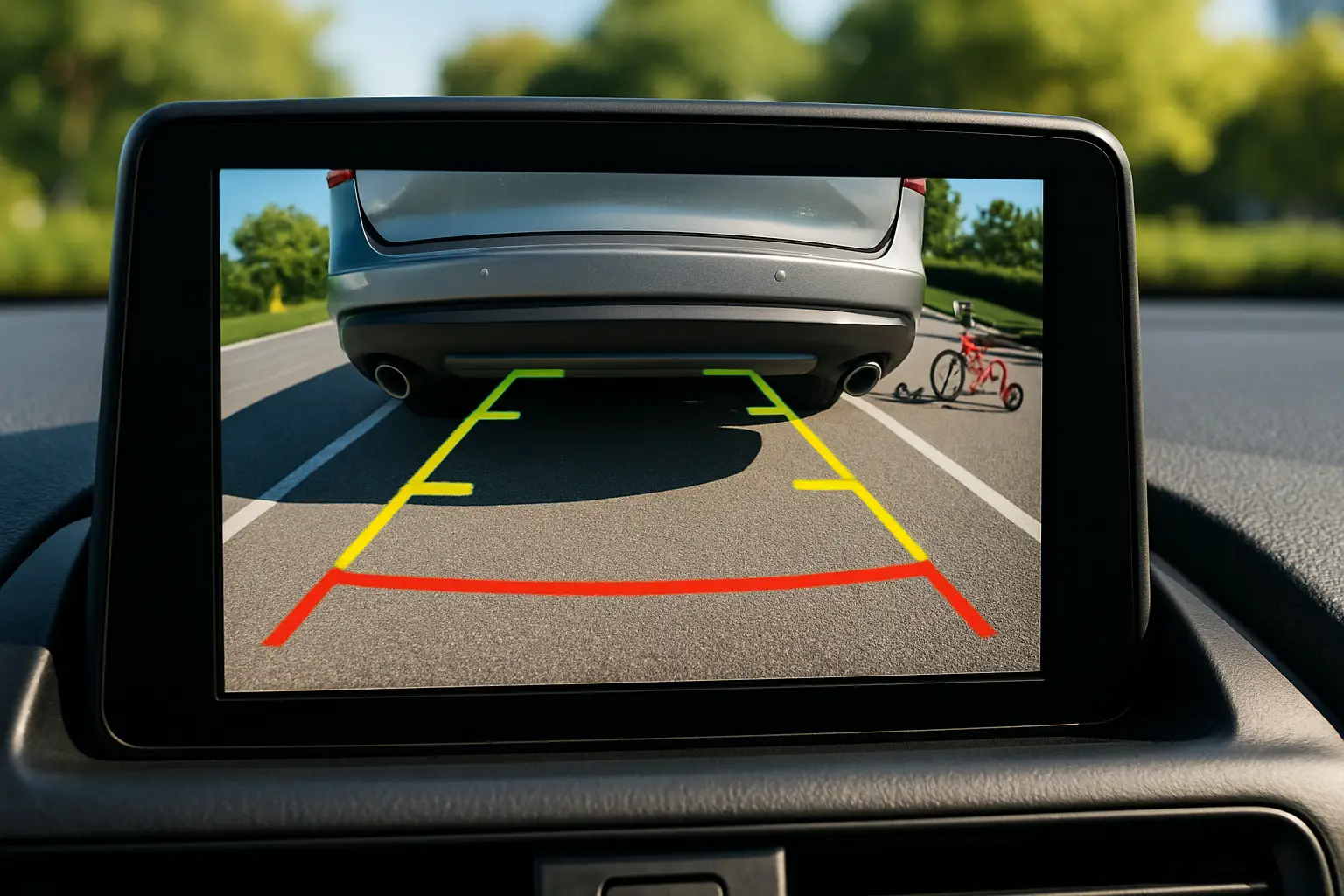
Choosing a backup camera can feel overwhelming with all the options out there. It doesn't have to be. I've spent years in this field, and I can help you break it down into simple, manageable steps. We're not just buying a gadget; we're investing in safety. Let's start with the most important factor: what the camera can actually see. This all comes down to the viewing angle, a detail that can make or break your entire system. Let's dive in and make sure you get it right from the start.
What is the Best Viewing Angle for a Backup Camera?
A narrow view misses hazards at the sides. A fisheye view distorts distance. Finding the right balance is key to truly seeing everything important behind you.
The best viewing angle for a backup camera is between 120 and 170 degrees. This range provides a wide enough view to see cross-traffic and obstacles without causing significant "fisheye" distortion that makes judging distances difficult. It's the sweet spot for safety and clarity.
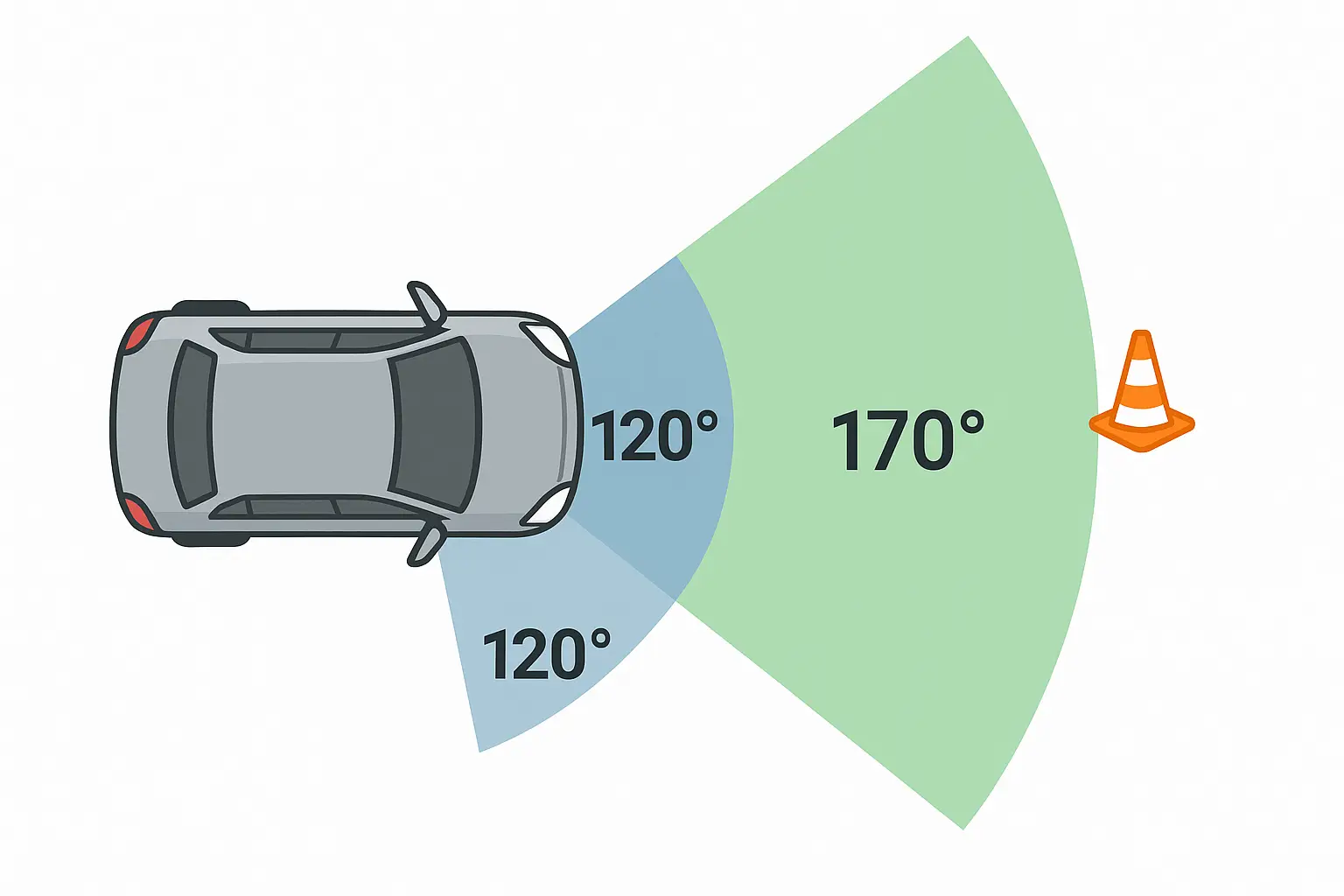
The viewing angle is perhaps the most misunderstood specification, but it's critical. This number tells you how wide of a picture the camera can capture, measured horizontally. Think of it as your digital peripheral vision. A wider angle seems better on paper, but there are trade-offs. Here at VST Tech, we've tested countless lenses, and experience has shown us that the perfect balance is everything. It's about getting the most visual information without creating a distorted, confusing image. Let's break down why that 120-170 degree window is so important for your safety.
The Problem with Angles Under 120 Degrees
A narrow viewing angle creates a dangerous "tunnel vision" effect. You might see a car or a wall directly behind you perfectly, but you will completely miss a child on a tricycle or a shopping cart just off to the side. When you're backing out of a parking spot, you need to see cars approaching from the left and right. A camera with less than a 120-degree view simply cannot capture that cross-traffic until it's dangerously close. It gives a false sense of security because while the screen shows "all clear," the real danger is just outside the frame.
The Danger of "Fisheye" Distortion Above 170 Degrees
On the other end of the spectrum, cameras with ultra-wide angles (often 180 degrees or more) create a "fisheye" effect. This distortion bends the image, making straight lines appear curved. It makes objects in the center of the screen look much farther away than they are, while objects at the edges look stretched and warped. I've seen drivers misjudge their distance to a garage wall or another car's bumper because of this distortion, leading to the very kind of bump they were trying to avoid. At VST Tech, we cap our consumer cameras at 170 degrees because it provides the maximum safe field of view without compromising your ability to judge space accurately.
How Do You Choose the Right Backup Camera Mount?
Drilling holes in your car is nerve-wracking. A poorly placed camera is useless. Let's find a mounting style that fits your vehicle and your comfort level.
Choose a mount based on your vehicle type and installation preference. License plate mounts are easiest to install. Lip mounts offer a clean, factory-look. Bracket mounts are versatile, while flush mounts provide the most seamless integration but require drilling.
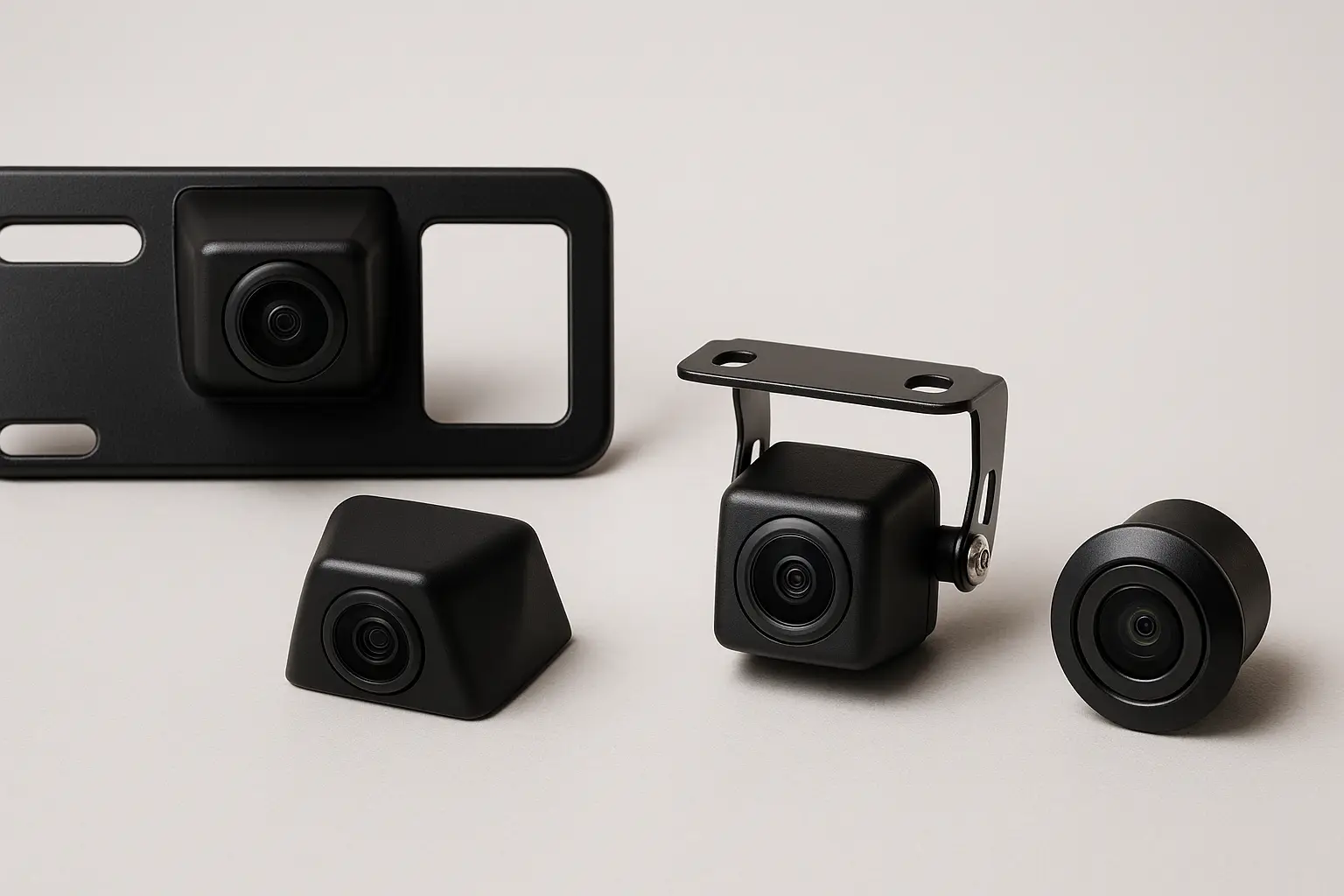
Once you know what you want the camera to see, you need to decide where to put it. The mounting style affects not just the installation process but also the camera's angle and overall look on your vehicle. There's no single "best" mount; the right choice depends entirely on your car, truck, or RV. I always tell people to think about two things: what provides the best view and what level of installation are you comfortable with? Some people want a quick, no-fuss setup, while others want a camera that looks like it was installed at the factory.
Mounting Options at a Glance
| Mount Type | Installation Difficulty | Best For | Appearance |
|---|---|---|---|
| License Plate | Very Easy | Most cars, SUVs, trucks | Visible, but convenient |
| Lip Mount | Easy to Moderate | Sedans, SUVs, hatchbacks | Clean, OEM look |
| Bracket Mount | Easy to Moderate | RVs, commercial trucks | Functional, versatile placement |
| Flush Mount | Difficult | Any vehicle (for custom look) | Invisible, completely integrated |
License Plate Mounts: The Universal Choice
This is the most popular style for a reason. It's incredibly easy to install. You simply use your existing license plate screws to attach a frame or a small bar that holds the camera. The whole process can take just a few minutes. It's a great option for people who are leasing their vehicle or who aren't comfortable with more permanent modifications. The main downside is that the view can be slightly off-center, and in some states, you need to be careful that the frame doesn't cover any part of your license plate number or state name.
Lip Mounts: The Factory Look
If you want a camera that looks like it belongs on your car, a lip mount is the way to go. These are designed to be installed on the small "lip" above your license plate or on the tailgate handle. This placement often provides a perfect, centered, and slightly downward-angled view, which is ideal for seeing your bumper and the area right behind it. Installation is a bit more involved as you'll likely need to run the wire through the trunk lid, which might require removing some interior trim panels. However, the clean, professional result is well worth the extra effort for many drivers.
What Extra Features Should You Really Look For in a Backup Camera?
A basic video feed isn't enough. What about at night, or in the rain? You need features that make your camera reliable in all conditions, not just a sunny day.
Look for essential features like excellent night vision (using IR LEDs or low-light sensors), dynamic parking gridlines that move with your steering, and a high waterproof rating (IP67 or higher) to ensure your camera works reliably.
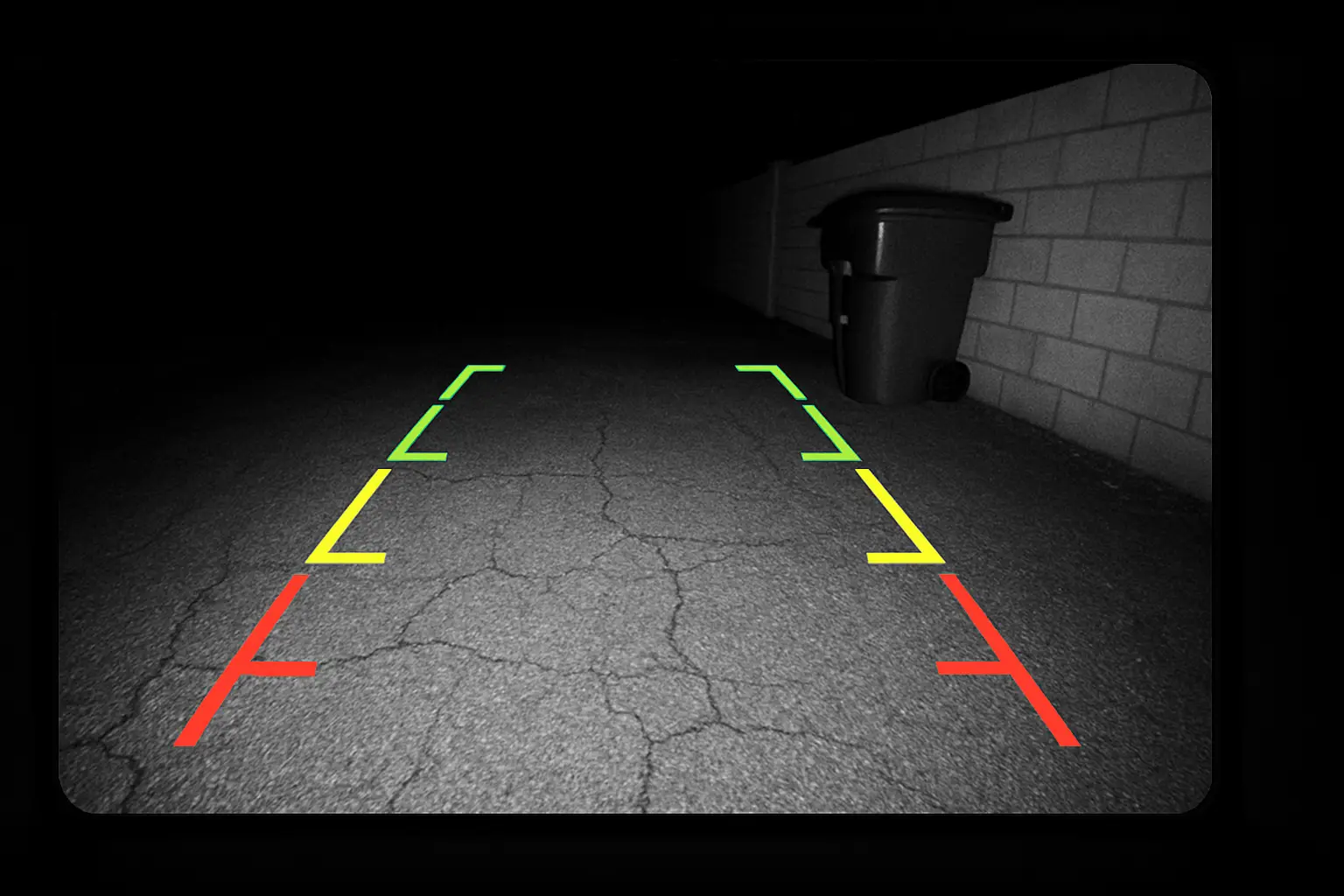
A backup camera is a safety device, and it needs to work perfectly every single time you put your car in reverse. This means it has to perform in the dark, in heavy rain, and it needs to give you information that is actually helpful for maneuvering. The spec sheet can be full of confusing marketing terms, but I want to cut through the noise. From my years of developing and testing these systems, there are a few features that I consider non-negotiable for anyone serious about safety.
Seeing in the Dark: Night Vision Explained
Your camera is useless if it can't see at night. There are two main technologies for this. The most common is Infrared (IR) LEDs. These small lights, usually placed around the camera lens, flood the area behind the car with infrared light that is invisible to the human eye but very visible to the camera sensor. This produces a clear black-and-white image even in total darkness. The other, more advanced option is a high-performance image sensor, like Sony's STARVIS technology. These sensors are incredibly sensitive to light and can produce a clear, full-color image using just the faint ambient light from streetlights or even your reverse lights. While both are effective, superior sensors are the future of night vision safety.
Parking Gridlines: Static vs. Dynamic
Most cameras display gridlines on the screen to help you judge distance and stay centered. But not all gridlines are created equal. Static gridlines are just a fixed overlay on the image; they don't change. Dynamic gridlines are a true game-changer. They connect to your vehicle's steering system and bend as you turn the wheel, showing you the exact path your car will take. This is incredibly helpful for navigating tight parking spaces or backing around a corner. It takes the guesswork out of reversing. Once you've used dynamic lines, it's hard to go back to static ones.
Weatherproofing: The Importance of the IP Rating
Your backup camera lives on the outside of your car, where it's exposed to rain, snow, dirt, and high-pressure car washes. It needs to be tough. The IP (Ingress Protection) rating tells you exactly how well-sealed it is. It's a two-digit number. The first digit is for dust protection (6 is the highest), and the second is for water protection. A rating of IP67 means the camera is fully dust-tight and can be submerged in 1 meter of water for 30 minutes. IP68 is even better. I once had a customer bring in a cheap camera that failed after a single automatic car wash. This is why at VST Tech, we only use cameras with high IP ratings like IP68 or IP69K. Reliability isn't a luxury; it's a requirement.
Are Wired or Wireless Backup Cameras Better for Reliability?
Wireless sounds easy, but what about signal drops? Wired seems reliable, but installation is a pain. Let's settle the debate and find what's best for you.
Wired backup cameras are generally better for reliability. They provide a stable, interference-free video signal. Wireless cameras are easier to install but can suffer from signal lag or interference, potentially compromising safety at a critical moment.
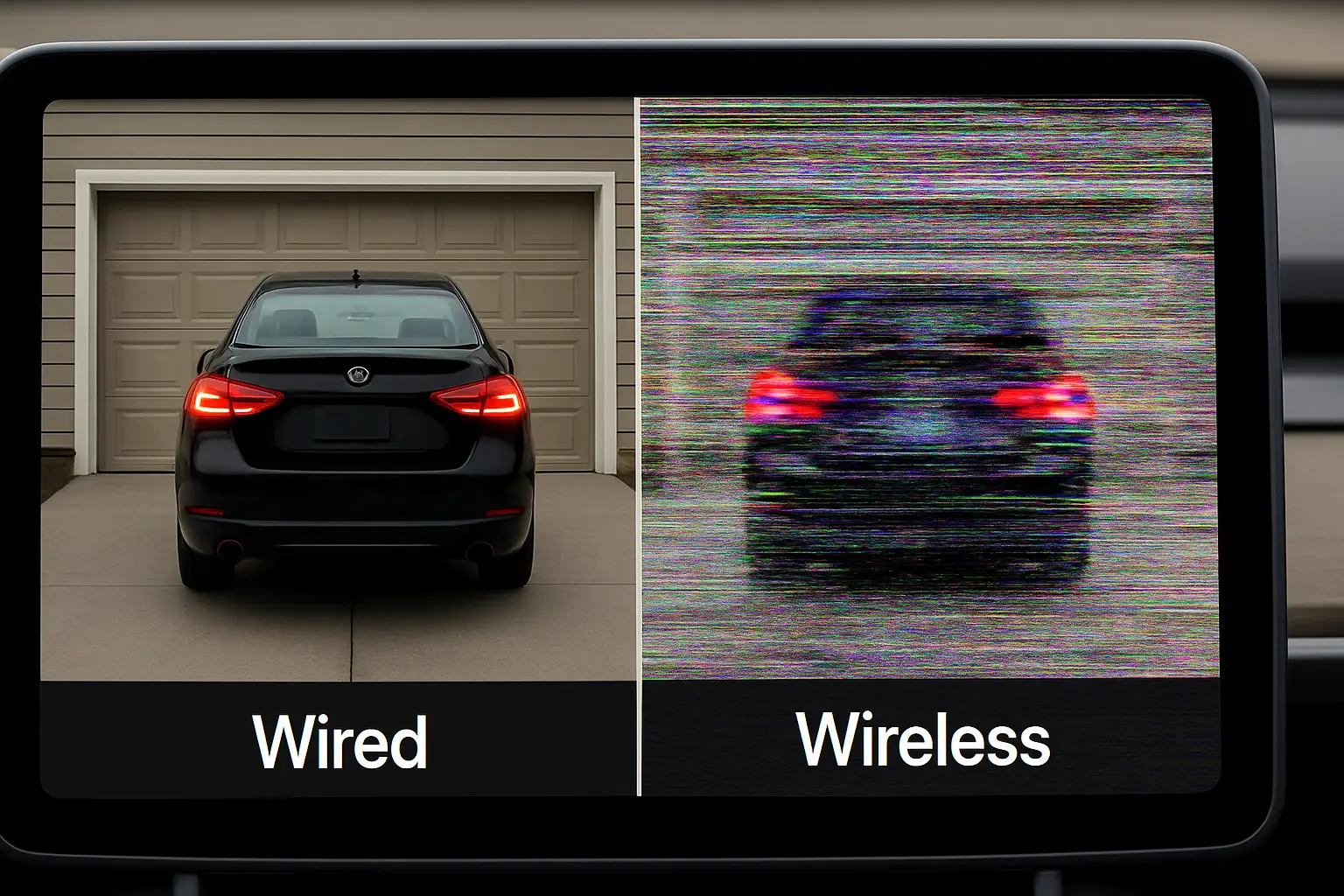
This is one of the biggest questions I get, and it's a critical one. The choice between wired and wireless comes down to a classic trade-off: installation convenience versus signal reliability. While wireless technology has improved, when it comes to a safety system that you depend on in critical moments, the choice becomes very clear to me. A split-second lag or a dropped signal at the wrong time can be the difference between a perfect parking job and a costly accident. Let's look at the facts so you can make the right decision for your needs.
The Case for Wired Systems
A wired backup camera system creates a direct, physical connection between the camera at the back and the monitor at the front. This is its greatest strength. A hard-wired connection is not susceptible to radio or electrical interference. The video feed is stable, clear, and has zero lag. What you see on the screen is happening in real-time, exactly as it happens. The main drawback is the installation. You have to run a cable, often under carpets, through trim panels, or along the vehicle's frame. It's a one-time job that might take an afternoon, but the result is a lifetime of unwavering reliability. For any passenger car, SUV, or truck, I will always recommend a wired system for this reason.
When to Consider a Wireless System
Wireless cameras are undeniably easier to install. You just need to provide power to the camera and the monitor, and they connect to each other through a radio signal, usually 2.4GHz. This makes them a very popular choice for long vehicles like RVs, trailers, or fifth wheels, where running a 50-foot cable is a massive undertaking. However, this convenience comes at a cost. The 2.4GHz frequency is crowded. It's the same one used by Wi-Fi, Bluetooth, and even some garage door openers. This can lead to signal interference, causing a glitchy, frozen, or even completely blank screen. From a safety perspective, that's a risk I'm not comfortable with in a daily driver. If a wired installation is simply not feasible for your long vehicle, look for a high-end digital wireless system, as they are more resistant to interference than older analog models.
Schlussfolgerung
Choosing the right backup camera is a critical safety decision, not just an upgrade. By focusing on a clear viewing angle, the right mount for your car, essential features like night vision, and the unmatched reliability of a wired system, you empower yourself. You add a layer of confidence to every journey. At VST Tech, this is our driving mission. We believe that by making informed choices about technology, we can create a safer driving environment for everyone. Protect your vehicle, protect your family, and drive with peace of mind.

